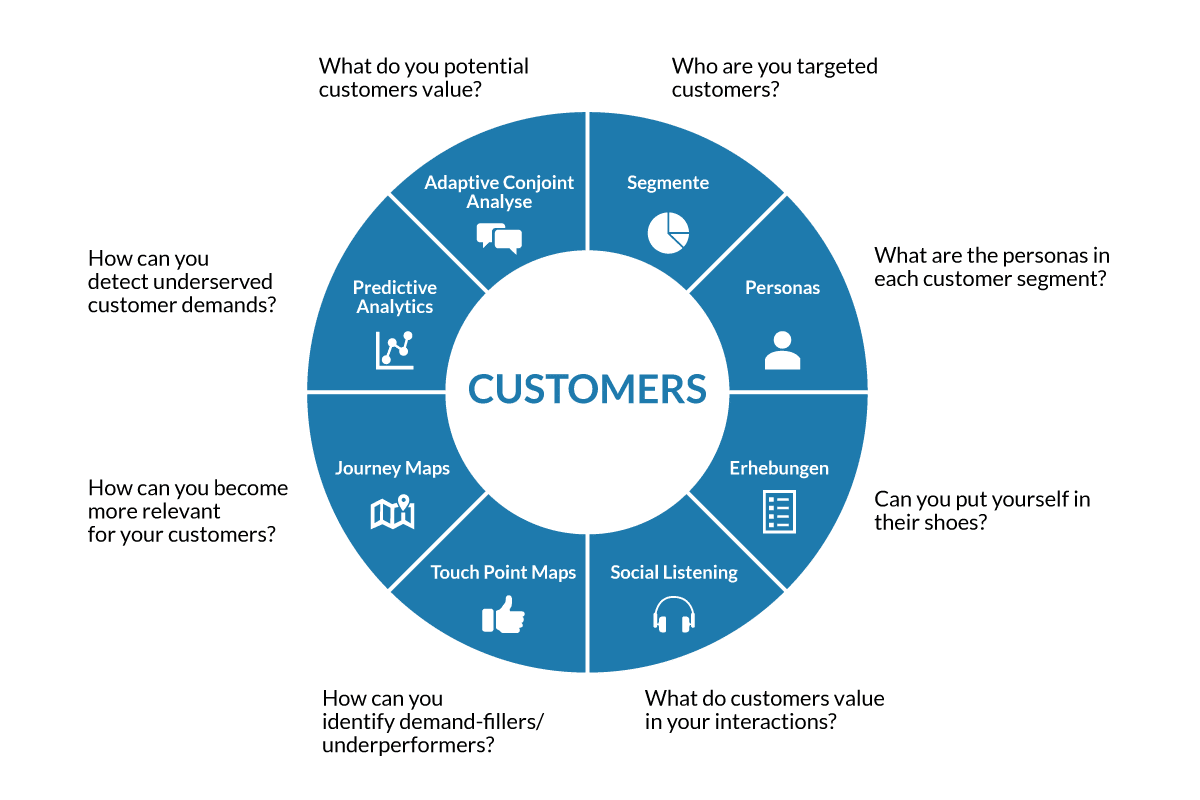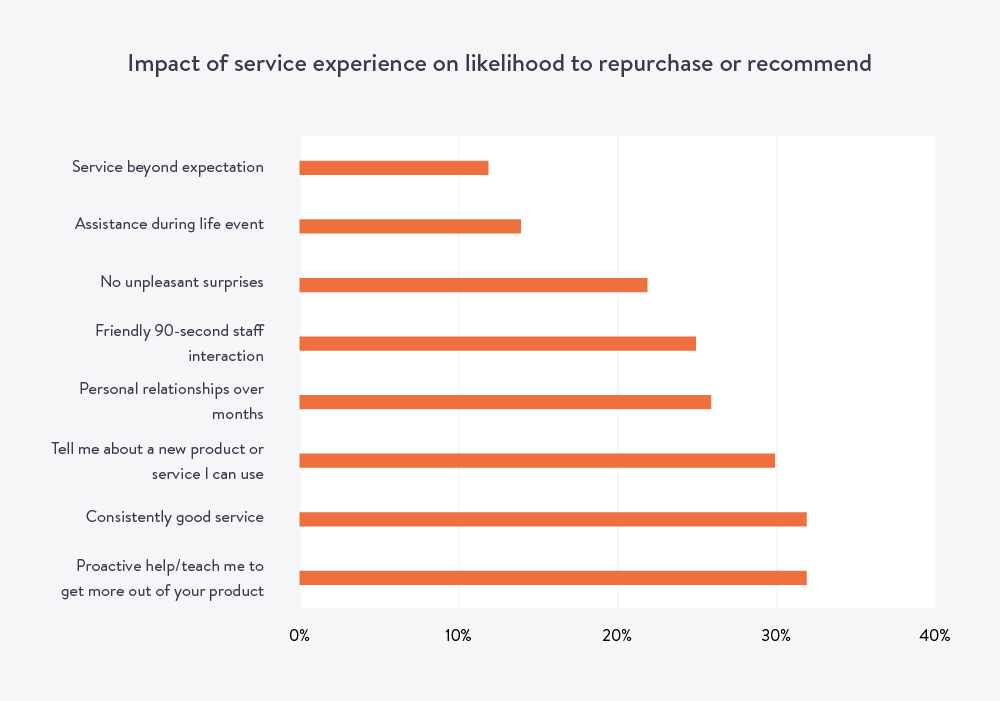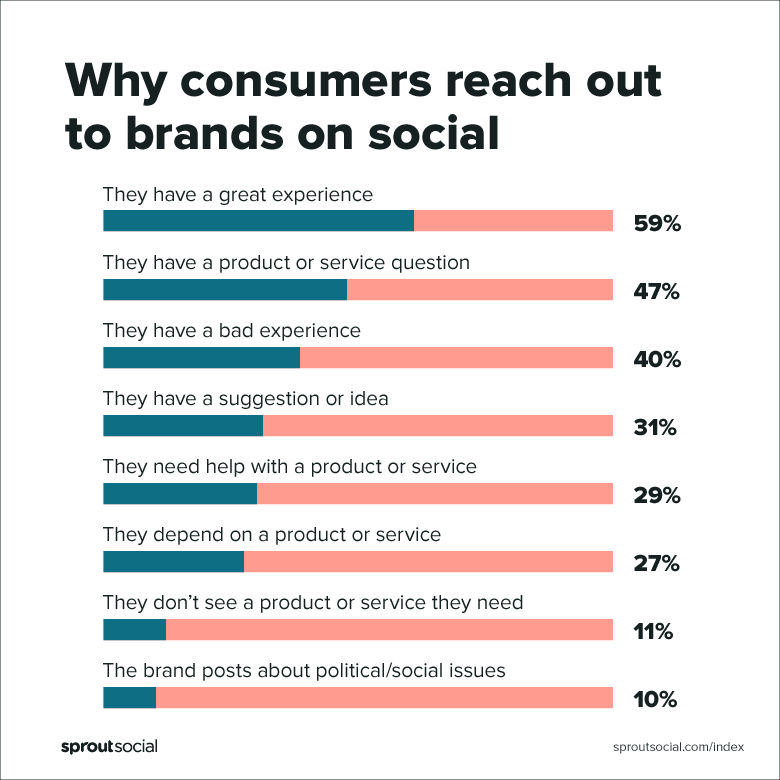According to an Accenture study, 48 percent of consumers expect exceptional treatment for being a good customer.
Identifying customer needs and expectations is crucial for companies wanting to produce a solution that really addresses their customers’ issues. Not to add, the simplest approach to intelligently position your brand in the market is to align your internal teams around the unique demands of your consumers.
Your frontline professionals are the ones that provide customer service, and they must be able to communicate with your consumers to understand customer needs and expectations.
Improving customer experience is ultimately dependent on a firm’s ability to bridge the gap between what customers anticipate and what a company actually offers to the customers.
Why is identifying customer needs important?
Before you begin marketing your company, you must first understand what your customers want and why they want it. Customer research and feedback may help you figure out how to understand your customers needs and expectations so that they need your products and services.
Listed below are several reasons why identifying customer needs is important.
- It is critical to correctly assess consumers’ needs in order to ensure increased customer happiness and loyalty.
- Customers have distinctive needs. Assuming what a consumer wants based on prior customers might turn them off.
- Identifying the needs of customers enables agents to cross-sell relevant items or services.
- Encourages repeat purchases and client retention.
- Gives you a competitive advantage in the market.
Ways to identify customer needs?
Customers anticipate their expectations to be met in order for them to be happy with both the customer service and the purchase. The key piece of any given company should be identifying customers’ needs. This guarantees that you have a solid customer-centricity core that satisfies customer needs, which is a must-have skill in every business.

5 Ways to Identify Customer Needs
1. Focus group
A focus group is a small group in which the main point is a certain product or topic. Qualitative or quantitative surveys are preferred by the groups since they give more viewpoints and reasons. A small group of individuals is used by businesses to look into certain topics or items. Many companies employ focus groups to fine-tune information gleaned from more in-depth interviews or surveys.
A focus group’s purpose is to develop an open and honest discourse with your consumers. Focus groups will help you gain a better knowledge of how your consumers react to your company, product, and solutions. This can help your company in understanding the needs and meeting the expectations of the customers.
2. Customer survey
Surveys are another approach to reach out to consumers, but they need the use of multiple-choice or ranked questions to collect data that businesses may use to better understand their customers’ requirements.
If you want to know what your present consumers think of your product or brand, a survey might help you find out. However, surveys are only as successful as their design – you must be clear on what you want to know, how you phrase questions, who your audience is, and how the survey is structured.
A regular survey asking the right questions about the product and the services may help you identify the needs of the customers.
3. Social media listening
The majority of today’s businesses have a social media presence. The process of monitoring social media channels to follow conversations about a product, brand, or competition in order to acquire relevant data is known as social listening.
Connecting with consumers through their chosen medium also aids in the development of a more meaningful connection. It’s also a great method to get real-time feedback from your consumers on what they enjoy. If you see recurring queries or concerns, it’s a solid indication that you have a customer that needs to be addressed.
The more you are active on your social media channels and listen to both positive and negative feedback of the customer, the more it helps you in identifying customer needs and delivering what they want.
Right tools with the agent can help you monitor your social media easily and seamlessly. Kapture’s One Suite helps your agent monitor all the feedback and queries coming through different social media platforms by bringing them to a single dashboard.
4. Keyword research
What did you do the last time you were looking for the perfect pair of socks? You most likely looked for help online. That is why keyword research is so important: it assists businesses in identifying popular search keywords and phrases that consumers enter into search engines.
Keywords may also provide you with useful information about what your customers require from you, your company, and your goods. You can establish what your clients are looking for if you know how they search online and, more significantly, how they search for your company and sector. After you’ve completed your study, you may use it to develop a product or service that better meets their demands.
5. Customer service team
Another simple method to discover what your consumers want is to speak with the people who interact with them on a daily basis. One of the most significant sources of client information you have is your customer support team.
Concentrate on teaching your customer service personnel to instill excellence in every contact or email they handle. When engaging with clients over many platforms, keep your voice consistent so that the message is conveyed clearly. Ensure that your brand’s reputation is promoted in all aspects.
Providing five-star customer service and taking feedback from the customers can help you understand their needs and meet their expectations.
Service automation platforms like Kapture’s One Suite helps companies in providing an excellent customer service experience. It provides an omnichannel experience to the customers by bringing their queries to a unified dashboard for the agent and providing them with quick resolutions.
How to meet customer expectations
When a consumer does not receive what they expected from you, it might result in lower sales and a negative reputation. It might reflect on the quality of your goods or emphasize bad service from your personnel. In any case, it demonstrates that your company is unconcerned about its consumers. And who wants to do business with a corporation that doesn’t care about its customers?
1. Collect feedback regularly
Listening to your consumers is an important part of knowing them. Pay attention to what people have to say, whether pleasant or bad. Your clients’ feedback contains a lot of information that can assist you in improving their customer experience. Although it may appear that being handed critical feedback is detrimental to your business, it is, in reality, an opportunity when seen in a different light.
For a firm to prosper, it must be aware of market trends and developments. What is sustainable in a few years may not be so appealing in the present. Some well-established organizations are currently suffering as a result of failing to keep up with generational changes.
2. Be transparent and honest
One of the reasons businesses fail to meet their consumers’ demands is because their expectations aren’t aligned. It is a big disadvantage since you will never be able to satisfy your customers’ needs because you will never truly understand them. You may ensure that your expectations are reasonable by ensuring that everyone in the firm understands your goals and how to attain them.
If a customer requests a solution by next week but you’re not sure if it’s feasible, don’t answer yes. Tell them that although next week is feasible, you will address their problem within 10 days at the most.
This not only gives you some breathing room, but it also ensures that your consumers aren’t let down by a promise you weren’t sure you could keep in the first place. This helps in meeting the customer’s expectations on time.
3. Deliver quality customer service across all channels
Your website, social media sites, and customer support agents are all part of the customer service cycle and work best when they are all in sync. When you update or edit one of these channels, check the others to confirm that the information is consistent and make any necessary changes. Maintaining this uniformity across channels and platforms ensures that you give correct information while avoiding client confusion.
If your agents are inconsistent and frequently provide contradictory information, your customers will feel confused and alienated and it will convey the impression that your company is disorganized. You can satisfy your clients’ needs if everyone knows the company’s aims and capabilities. Use every possible communication channel to reach out to customers. At the moment, the greatest approach to engage with customers is through live chat, e-mail, and social media.
Make sure your brand voice and image are consistent when communicating with your consumers. Even if you communicate with your consumers through many media, you must maintain your own voice and personality so that they fully get your message.
Companies that invest in digital technology solutions have a competitive advantage over their competitors, as companies that have embraced digital transformation are 26% more profitable. (Read more)
4. Customer-centric attitude
Creating a business culture that is focused on the customer experience at every touchpoint is a wonderful method to satisfy your customers’ needs and meet their expectations. Encourage your workers to keep your consumers at the forefront of every choice they make, whether they are a developer adding new features or a marketing agency creating new campaigns.
Creating a customer-focused corporate culture guarantees that both management and staff are working toward the same objective of serving the needs of customers and offering a great experience.
When a company is customer-centric, it tries to find and meet the needs and expectations of the customers by analyzing their purchasing behavior with the help of the right tools.
Kapture’s One Suite empowers your agents with reporting and analytics tools to understand customer behavior by analyzing their feedback and responses. It is presented to them in 1000+ reporting formats to make it easier and better to read and analyze for the teams.
5. Know your customers
The first step in achieving consumer expectations is simply determining who your target audience is and this necessitates going beyond basic demographic data such as age, gender, and geography.
Of course, these facts might be useful in creating marketing personas. To truly understand your consumers, though, you must delve further and learn about their wants and interests, as well as the elements that influence their purchasing decisions.
80% of customers would be more likely to use an organization if they offer personalized experiences.
Begin with the fundamentals: demographic client data such as age, geography, personality, lifestyle, and income. Previous purchases are frequently a strong predictor of what a customer will buy next.
6. Let your customers help themselves
Customers utilize self-service tools to investigate and troubleshoot issues rather than interacting with a company’s customer support staff. FAQs, knowledge base and online discussion forums are the most frequent forms of client self-service.
Kapture’s powerful Self-Serve feature lets you create a detailed Q&A, and a unified knowledge base to ensure a seamless self-serve experience for all end-users.
With that knowledge, your business can guarantee that future product development is more responsive to consumer demands and proactive in identifying, addressing, and even forecasting possible challenges or areas of misunderstanding.
The customers can actively help themselves and get quick resolutions to their problems.
Kapture’s KMS helps your customers search for anything they want from your knowledge base with the help of a few keywords which empowers them to solve their own problems independently.
7. Quick response
The sooner you respond to consumer requests, the more satisfied your customers will be. Using service automation platforms such as chatbots on your website or customer service call centers might help you increase your response times. You should also monitor any review boards and reply to favorable feedback as soon as possible to preserve a pleasant and responsive reputation.
Customers expect quick service. They want a corporation to resolve their concerns swiftly, whether the complaint was made through digital channels such as social media, feedback email, and website comments or off-site on third-party and review sites.
Giving quick and worthy solutions to the customers is another way to meet customer expectations.
81% of companies view customer experience as a way to gain a competitive advantage (Read more).
Examples of customer needs and expectations
It goes without saying that the more a customer identifies with your brand, the better their level of satisfaction. When you provide a world-class customer experience, you will be rewarded with a wider base of raving admirers; including your constructive value, which will help to build brand reputation and retain it.
The following are the basic needs that a customer needs and expects from a company.
- Excellent customer support
- To get a quick response from every channel they contact
- Easy returns and exchanges
- A powerful self-serve
- Transparent and honest pricing
Kapture for understanding your customers needs and expectations
By focusing on your customers, your organization can become 60% more profitable.
Understanding your customer’s needs and expectations is no rocket science and it becomes simple and easy when you have the right tool with you.
Kapture’s One Suite is built to understand the needs and meet customer expectations. It comes with features like reporting and analytics to track consumer behavior, offers a powerful self-serve to the customers for quick resolutions, an omnichannel dashboard that routes all queries from different channels to a single dashboard, and everything required to provide an excellent customer experience.
About the Author | |
 | Ankit Kochar |
| Ankit Kochar is a content writer at Kapture CRM who loves to write creative as well as informative content. He has worked as a creative and academic content writer in the past and has a keen knowledge of writing reports, essays and dissertations. His current field is helping him research and hone his SaaS knowledge. | |
,
,
,
,
,
,
,
,
,
,
,
,
,










